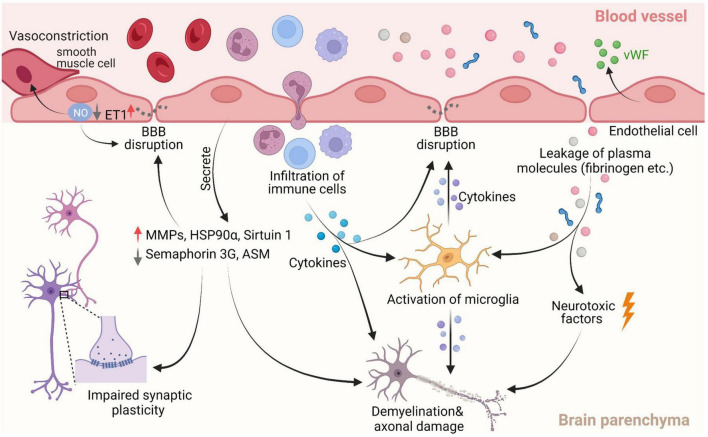FIGURE 2.
Pathological characteristics of cerebral small vessel disease (CSVD). Of them, decreased nitric oxide (NO) bioavailability is the most commonly used marker of dysfunction in endothelial cells (ECs). Reducing NO levels can lead to less vasodilation of neighboring smooth muscle cells, which in turn causes nitrosylation or nitrosation of tight junction (TJ) proteins, ultimately resulting in BBB disruption. Increased ET1 release by dysfunctional ECs can give rise to pathological vasoconstriction. The reduction of semaphorin 3G and sirt1 due to endothelial dysfunction can affect synaptic plasticity and BBB integrity respectively, and consequently, contribute to cognitive decline. Additionally, the factors secreted by dysfunctional ECs such as von Willebrand factor (vWF), heat shock protein 90α (HSP 90α), acid sphingomyelinase (ASM) and matrix metalloproteinases (MMPs) can induce vessel damage directly, as well as impair the integrity of the BBB and white matter. Compromising the BBB allows for entry of potential detrimental plasma components and immune cells into the brain parenchyma, further promoting BBB breakdown and white mater damage via neuroinflammation and direct neurotoxic effects. Figure created using BioRender.com.

